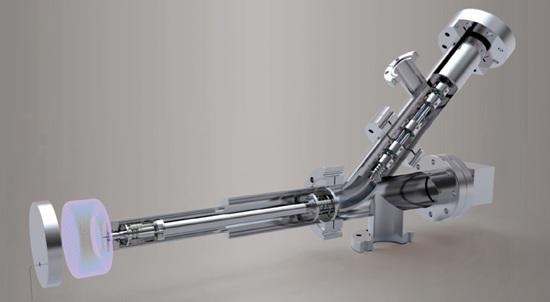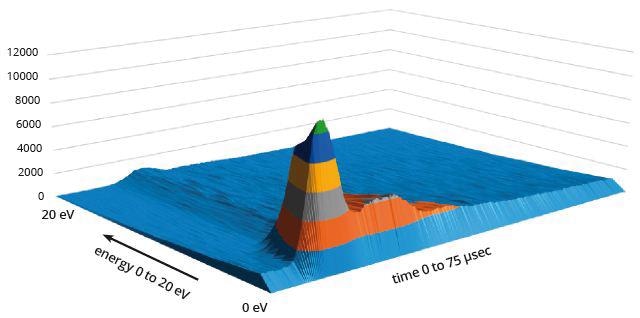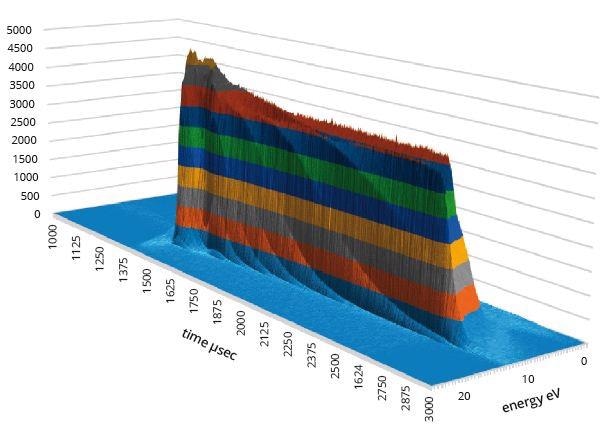Useful data can be obtained by directly measuring spectra and energy distributions of mass-identified positive and negative ions approaching the target surfaces in plasma reactors. In many cases, the measurements are provided as time-averaged distributions, even though the power exerted on the plasma was pulsed.
Using Multi-Channel Scalar Device for Time Resolved Analysis
Time-resolved data is advantageous, especially during initiation and decay of pulsed plasmas. The ion detector system of a Hiden EQP instrument (Figure 1) has been integrated with a Multi-Channel Scalar (MCS) device to perform these investigations.

Figure 1. Typical operating configuration for the Hiden EQP
The MCS takes up the role of a detector to carry out time resolved analysis in systems, including ion flight time measurements, plasma ignition/modulation/extinction experiments and beam chopper inlets.
The mass resolved ion beam detector output is sequentially driven by Hiden's internal MCS facility into one of the counting channels, thereby enabling high speed time resolved analysis of the desired ion through the estimation of total number of ions approaching the detector during the channel time.
The MCS facility helps in identifying high speed changes and acquiring time resolved data from external events without any external device. The ability to synchronously function with MASsoft's scan generators enables the MCS to obtain a data surface with time as one of the axes. An energy-time surface for ions in modulated plasma is a suitable example for this.
Example Data
The data attained for plasmas in a parallel-plate reactor operated with argon as the test gas and supplied with power either from a 25kHz AC supply or from an RF supply at 13.6MHz repetitively gated through a square-wave envelope from a signal generator at 500Hz frequency are given as the examples to exhibit the new capabilities of the EQP instrument.
A typical deviation with energy distribution time is shown in Figure 2, for Ar+ ions operating at 50mTorr pressure in a 20kHz plasma. At intervals of 200nsec, energy scans were carried out.

Figure 2. Typical time resolved data of Ar+ in a 20kHz 50mTorr plasma
The ion energy distributions for gated RF plasmas with argon as the test gas had reasonably more structure. Figure 2 shows a typical family of IED scans for Ar+ ions for 25W plasma at 35mTorr. The data particularly explains the rapid decay of high energy ions approaching the sampling orifice of the EQP, with the establishment of the plasma.

Figure 3. Typical time resolved data of Ar+ ions in an RF 13.6MHz 35mTorr plasma
Conclusion
This experiment was performed using the MCS device attached to the ion detector system of the EQP at a time resolution of 50ns. The results showed initiation and decay of features in the ion energy spectra, which could not be acquired using time averaged data.

This information has been sourced, reviewed and adapted from materials provided by Hiden Analytical.
For more information on this source, please visit Hiden Analytical.